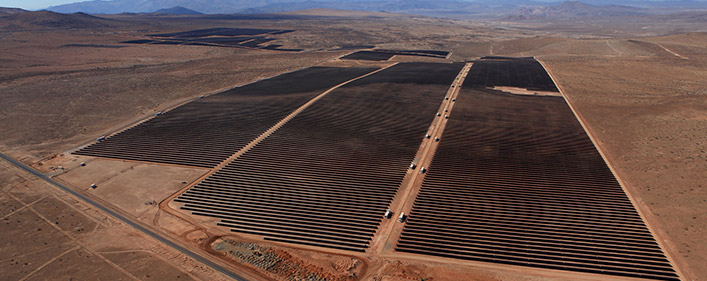Construction on renewable energy projects built under auction mechanisms across the world entails the risk of mispricing, and that a given project may become loss making. This is one of the main findings of the report “Renewables sector risks shift as competition reduces reliance on government subsidy” released by Moody’s Investor Service.
The report warns that, although competitive auctions are contributing significantly to reduced reliance on government subsidies and lower costs of renewable energy technologies, the risk from aggressive bidding may be credit negative in the absence of mitigating factors, if competition will further increase.
The authors of the report stressed that the recent auctions’ results for both solar and wind worldwide must be interpreted with caution, as the terms and conditions of the contracts awarded, as well as the operating risk profile varies across markets. On the other hand, project risks may increase, as with lower tariffs, the margin of error on assumptions for capital cost, project delays, equipment quality, payment delays and curtailment is reduced.
The report highlights the importance of evaluating a series of factors other than declining costs of renewables and economies of scale, when approaching a competitive auction, as material differences between markets still remain decisive for the potential risks and rewards of a project. These factors are: the terms of conditions of the tariff framework; the auction’s bidding rules; grid stability and capacity considerations; the ability of the buyer of energy under the PPA to pay invoices; capex synergies and local content requirements; and cost of financing.
Popular content
“Power generation companies,” the report asserts, “actively developing new renewables capacity through competitive auctions face the risk that their development activities proceed at a pace that is unsustainable. They will need to balance their goals for adding capacity against the risk of relying on overambitious forecasts for technological advancement, which may not materialise.” As for the advancement of PV, the report finds that next generation solar panels present risks by virtue of their limited track record.
A measure to mitigate all the above-mentioned risks may be the diversification of a renewable energy portfolio. “Renewable energy generators with large, diversified portfolios will be better placed to bid competitively in auctions, benefitting from learning effects, pricing power in the supply chain, and efficiencies in operational management. Diversified generation portfolio effects can mitigate merchant exposure and low prices,” the report concludes. As an example, the report cites the presence of South European utilities in Latin America as credit positive for the same utilities, as the risks are manageable overall and outweighed by the benefits of diversification and faster growth than in domestic European markets.
This content is protected by copyright and may not be reused. If you want to cooperate with us and would like to reuse some of our content, please contact: editors@pv-magazine.com.



By submitting this form you agree to pv magazine using your data for the purposes of publishing your comment.
Your personal data will only be disclosed or otherwise transmitted to third parties for the purposes of spam filtering or if this is necessary for technical maintenance of the website. Any other transfer to third parties will not take place unless this is justified on the basis of applicable data protection regulations or if pv magazine is legally obliged to do so.
You may revoke this consent at any time with effect for the future, in which case your personal data will be deleted immediately. Otherwise, your data will be deleted if pv magazine has processed your request or the purpose of data storage is fulfilled.
Further information on data privacy can be found in our Data Protection Policy.